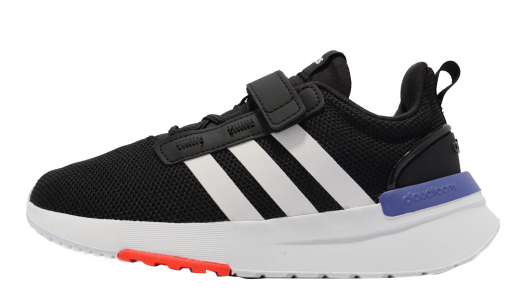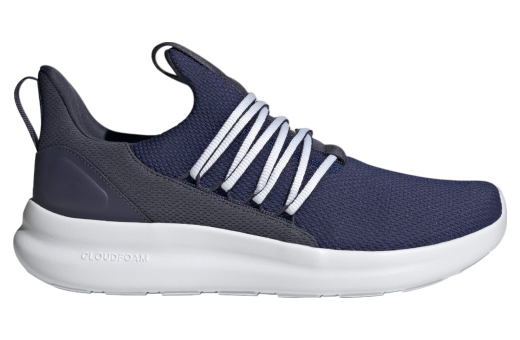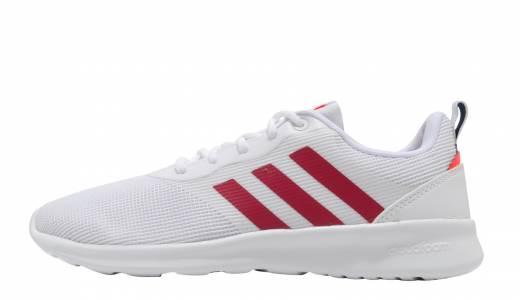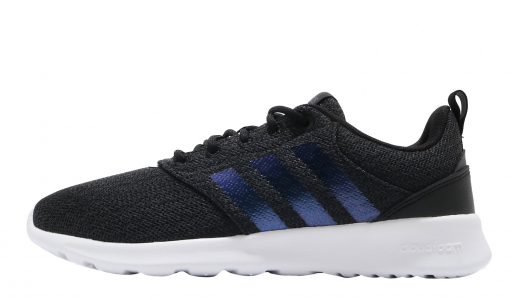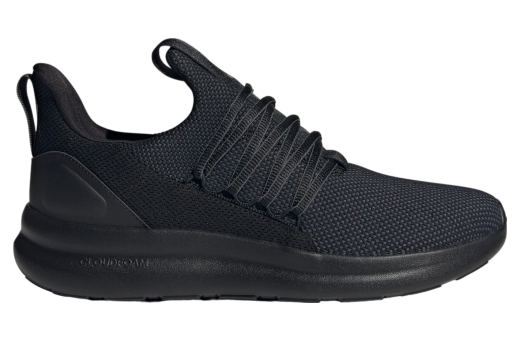Adidas Racer
The Adidas Racer series is a testament to the brand's commitment to merging innovation with legacy. Rooted in the rich history of Adidas' athletic excellence, the Racer models are designed to cater to both casual runners and serious athletes. These shoes typically feature a lightweight construction that promotes swift, unhindered movement. Additionally, they incorporate cutting-edge materials and technologies such as breathable mesh uppers and responsive cushioning in the midsoles. This combination ensures that wearers experience maximum comfort and support during their runs, making the Adidas Racer a popular choice for those seeking both style and performance in their athletic footwear.
Beyond functionality, the Adidas Racer series also stands out for its sleek and modern aesthetic. The design often includes the iconic three stripes, seamlessly blending tradition with contemporary style. Available in a variety of colorways, these shoes appeal to a broad audience, from fitness enthusiasts to streetwear aficionados. The attention to detail in each pair of Racers reflects Adidas’ dedication to maintaining high standards in both form and function. As a result, the Adidas Racer has not only become a staple in the running community but also an essential element of fashionable, everyday wear.
History of Adidas Racer
The History of Adidas Racer
Introduction
The Adidas Racer is a flagship model within the iconic Adidas brand, which has made an indelible mark on the history of athletic footwear. As a running shoe that epitomizes both style and performance, the Adidas Racer has undergone significant transformations over the decades, adapting to shifting trends and innovations in sports technology. This comprehensive history of the Adidas Racer delves into its inception, evolution, cultural impact, and modern iterations, illustrating how it has become a symbol of both athletic excellence and street culture.
Early Beginnings: The Birth of Adidas
The story of the Adidas Racer can't be told without delving into the larger historical context of Adidas itself. The brand was founded by Adolf "Adi" Dassler in 1949 in Herzogenaurach, Germany. Adi Dassler had a clear vision: to create quality sports footwear that would improve athletes' performance. Over the years, Adidas quickly gained a reputation for excellence, largely driven by Adi Dassler's innovative mind and commitment to quality.
One of the early breakthroughs came during the 1936 Berlin Olympics when American sprinter Jesse Owens won four gold medals wearing track spikes crafted by Dassler. This success laid the groundwork for Adidas's future as a major player in sports footwear. However, it wasn’t until the latter half of the 20th century that the Adidas Racer would come into prominence.
The 1970s: Setting the Stage
The 1970s marked a significant time for Adidas as it was during this decade that the brand started to amass international appeal. Adidas became synonymous with athletes' triumphs and global sporting events. This decade was also crucial in the development of specialized running shoes. With a growing understanding of biomechanics and the particular needs of runners, Adidas began to experiment with different materials and designs.
The first iteration of what would become the Adidas Racer was introduced in the late 1970s. These early models were relatively simple, focusing on basic needs such as lightweight construction and adequate cushioning. The technologies used were basic by today’s standards, but these shoes represented a significant step forward in the evolution of running footwear.
1980s: Technological Advancements and Popularity
The 1980s saw a running boom, with jogging and marathons becoming mainstream activities. Adidas capitalized on this trend by enhancing the Adidas Racer with new technologies. EVA (ethylene-vinyl acetate) midsoles were introduced to provide better cushioning without adding extra weight. Mesh and synthetic uppers were used for improved breathability.
One notable model from this decade is the Adidas ZX Racer, which became an instant hit thanks to its blend of comfort, support, and style. The ZX Racer was among the early running shoes to incorporate a heel counter, offering improved stability for runners. Adidas also experimented with color schemes during this period, creating shoes that were not only functional but visually appealing—a trend that continues to this day.
The Adidas Racer line enjoyed immense popularity during this period, not just among athletes but also as part of streetwear fashion. The branding, featuring the iconic three stripes, became a symbol of quality and style.
1990s: From Running Tracks to Streets
The 1990s brought further innovations and cemented the Adidas Racer's place both on the track and in everyday urban environments. The decade saw the introduction of the Torsion system, a technology designed to provide midfoot support and allow natural rotation of the forefoot and rearfoot. This significantly improved the shoe’s stability and performance.
Additionally, the 1990s saw the rise of sneaker culture. The Adidas Racer, with its impeccable balance between performance and aesthetics, made it a favorite among not just athletes but also fashion enthusiasts. Collaborations with designers and artists began to emerge, blending sports performance with high fashion.
One of the standout models from this era was the Adidas Marathon Racer, which offered superior cushioning and support. The Marathon Racer was designed to meet the rigorous demands of long-distance runners, but its sleek design and comfort made it a popular choice for non-athletes as well.
2000s: The New Millennium and Technological Breakthroughs
Entering the 2000s, Adidas continued to build on its rich legacy, focusing on integrating cutting-edge technology and maintaining a strong cultural presence. With advancements such as the Boost technology, which offered unprecedented energy return, Adidas set new benchmarks in running shoe innovation.
The Adidas Racer, now under various sub-lines, incorporated this Boost technology, significantly enhancing the comfort and performance capabilities of the shoe. The lightweight yet responsive cushioning quickly became a favorite among runners and casual wearers alike.
Another milestone was the introduction of the Adidas Adizero line in the mid-2000s. The Adizero Racer was a performance-oriented model focusing on speed, making it particularly popular among competitive runners. It was one of the lightest shoes available, and its minimalist design prioritized function without sacrificing style.
Culturally, the Adidas Racer continued to thrive, appearing in music videos, streetwear collections, and high-profile collaborations. This era also saw the expansion of the Adidas brand into various subcultures, reinforcing its status as a versatile and stylish choice.
2010s to Present: Sustainability and Modern Challenges
As the 2010s rolled in, sustainability became a significant concern across various industries, including footwear. Adidas took a proactive stance by introducing sustainable practices and materials into their production processes. The Adidas Parley line, made from recycled ocean plastic, demonstrated the brand’s commitment to environmental responsibility.
The Adidas Racer continued to evolve with these changes, incorporating sustainable materials while still delivering top-notch performance. Models like the Solar Boost and the Ultraboost Racer combined eco-friendly elements with advanced running technologies, offering optimal energy return, cushioning, and durability.
Moreover, the popularity of running and fitness in general has not waned, with more people than ever participating in marathons, fitness challenges, and casual jogging. The Adidas Racer has continually adapted to meet these needs, offering a range of options for different types of runners, from casual joggers to competitive athletes.
The modern iterations of the Adidas Racer also embrace digital technology. Smart shoes equipped with trackers and connected to running apps help athletes monitor their performance in real-time, providing invaluable data that can be used to improve training regimes.
The Cultural Impact and Legacy
The influence of the Adidas Racer extends far beyond the realm of athletics. Since the 1980s, the shoe has been a staple in streetwear culture, appearing in skate parks, music clubs, and urban settings worldwide. Its iconic design, coupled with the legendary three stripes, makes it instantly recognizable.
Throughout its history, the Adidas Racer has enjoyed several high-profile collaborations with influencers from various fields, including music, fashion, and art. Partnerships with celebrities and designers like Kanye West, Pharrell Williams, and Stella McCartney have brought fresh perspectives to the shoe’s design, blending performance with avant-garde aesthetics.
These collaborations have not only broadened the shoe’s appeal but also solidified its status as a cultural icon. The versatile design of the Adidas Racer allows it to seamlessly transition from running tracks to fashion runways, demonstrating its universal appeal.
Conclusion
In tracing the history of the Adidas Racer, we see a microcosm of the larger narrative of Adidas itself—a story of relentless innovation, cultural adaptation, and a commitment to quality. From its early days as a simple running shoe to its current status as a multifaceted icon, the Adidas Racer embodies the evolution of athletic footwear.
As we move further into the 21st century, the Adidas Racer is poised to continue its journey, driven by the brand's dedication to technological advancement and cultural relevance. Whether on the track or the streets, the Adidas Racer remains a testament to Adidas’s enduring legacy in the world of sports and beyond.


